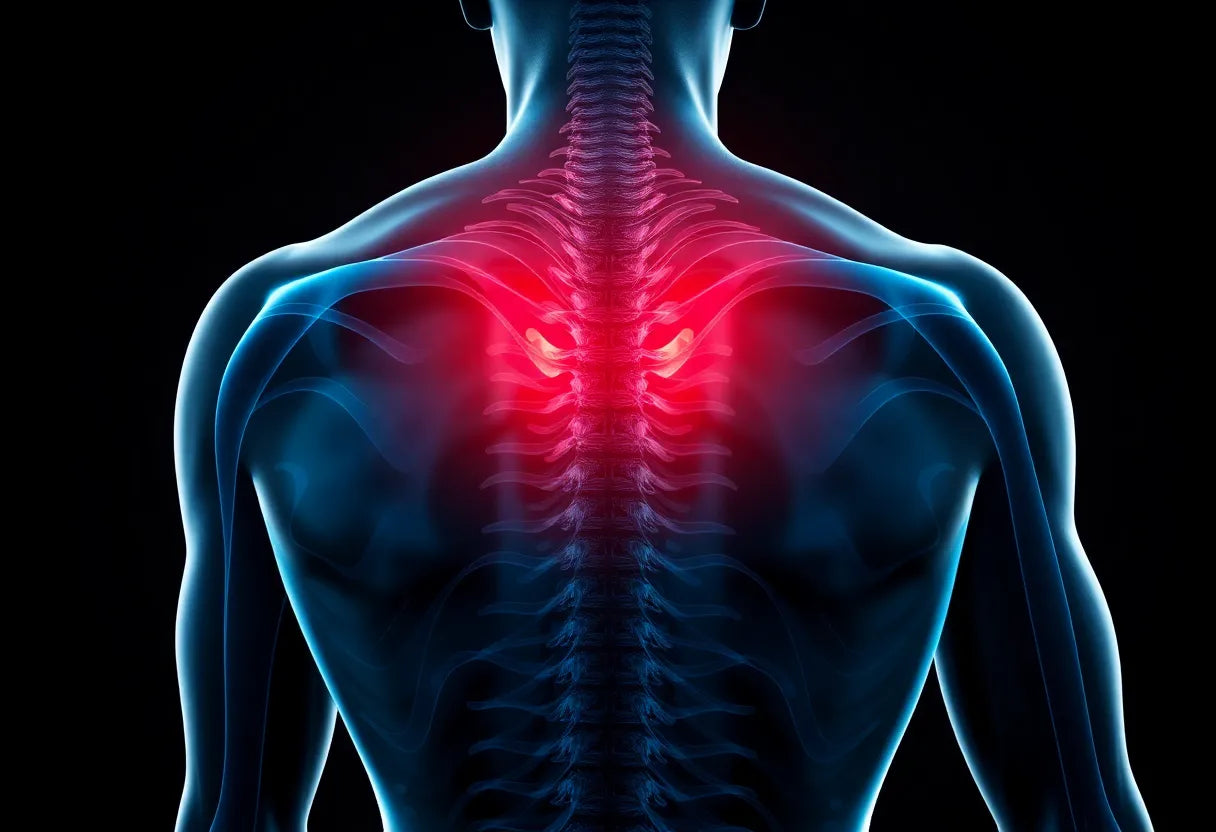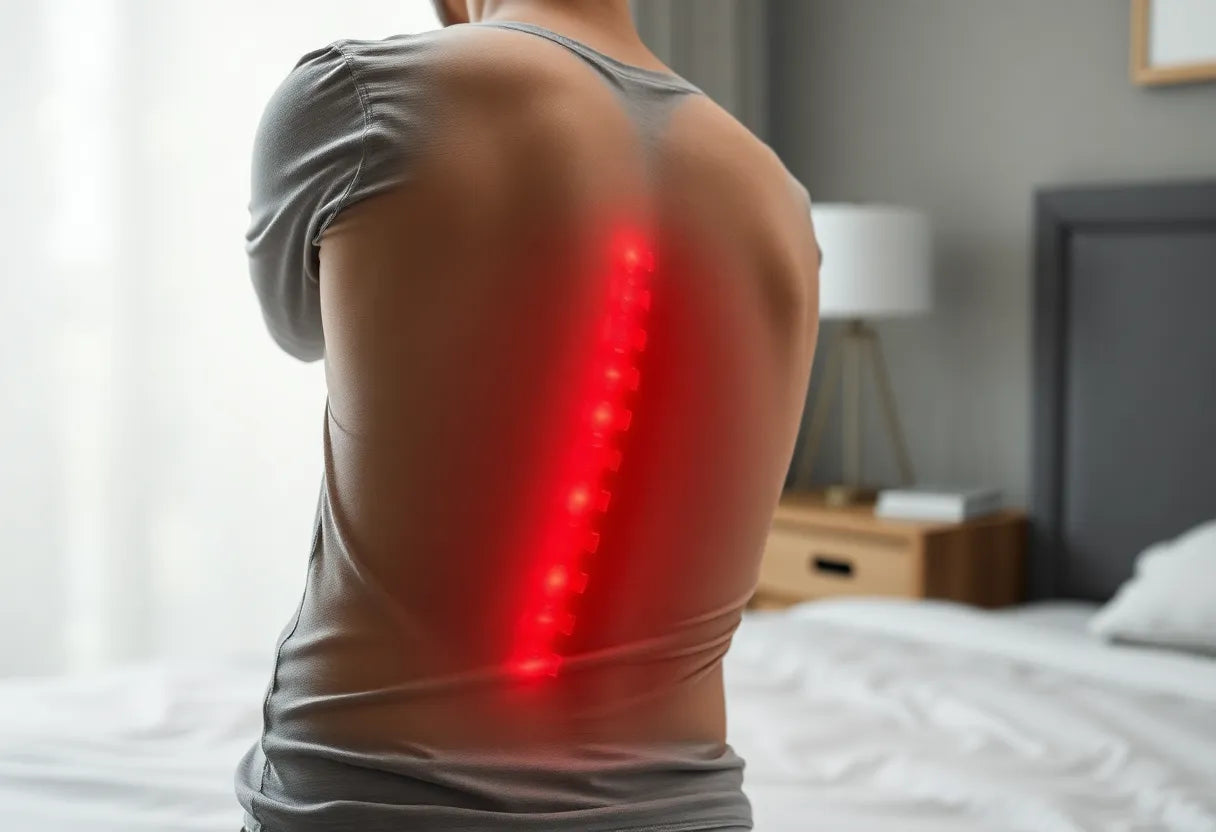Back muscle aches are a pervasive issue affecting millions of individuals worldwide, interfering with daily life, productivity, and overall well-being. Whether it's the sharp twinge felt after a long day at work or the persistent discomfort that makes simple tasks like bending or lifting seem daunting, back pain is a reality for many. The impact of these aches extends beyond physical discomfort, often leading to emotional and psychological stress as individuals grapple with limitations on their mobility and lifestyle.
The complexity of back pain lies in its multifaceted nature, with causes ranging from lifestyle choices to medical conditions. On one hand, the modern sedentary lifestyle, characterized by prolonged sitting and poor posture, plays a significant role in the development of back muscle aches. On the other hand, medical issues such as muscle strains, arthritis, and degenerative disc disease further complicate the picture, making it essential to understand these underlying factors to effectively address the pain.
Understanding the root causes of back muscle aches is crucial for developing effective strategies to manage and alleviate pain. By identifying the contributing factors, individuals can take proactive steps to prevent further discomfort and improve their quality of life. This blog aims to educate readers on the various causes, symptoms, and comprehensive strategies for managing back muscle aches, empowering them with the knowledge needed to take control of their health.
Through a detailed exploration of both common and less typical causes, this series will delve into the intricacies of back pain, providing insights into how everyday habits and medical conditions contribute to muscle aches. We will also discuss the symptoms that accompany these aches, helping readers recognize when it might be time to seek medical attention. Furthermore, by offering a range of treatment and relief strategies, from self-care and physical therapy to medications and complementary therapies, this blog will serve as a valuable resource for anyone seeking to understand and manage their back muscle aches.
In the following sections, we will explore the primary causes of back muscle aches, including muscle strains and sprains, lifestyle contributors, and less common medical conditions. By shedding light on these factors, we aim to provide a comprehensive understanding of back pain, paving the way for informed decision-making and effective management strategies. Stay tuned as we uncover the secrets to relieving back muscle aches and improving your overall well-being.
primary causes of back muscle aches
Back muscle aches can originate from a variety of sources, and understanding these can help in managing and preventing pain. One of the most common causes is muscle strains and sprains. These occur when muscles, tendons, or ligaments are overstretched or torn, often due to improper lifting, sudden movements, or overexertion. Such injuries can result in immediate pain and may lead to longer-term issues if not properly addressed.
Lifestyle factors also play a significant role in the development of back muscle aches. Poor posture, especially when sitting for extended periods, can lead to muscle fatigue and tension. A sedentary lifestyle exacerbates this issue, as lack of movement weakens muscles and reduces flexibility, making them more susceptible to strain. Additionally, aging naturally contributes to back pain, as the spine undergoes degenerative changes over time, such as arthritis and degenerative disc disease, which can increase discomfort and limit mobility.
While less common, certain medical conditions can also cause back muscle aches. Fibromyalgia, for instance, is a chronic condition characterized by widespread musculoskeletal pain, including in the back. Other potential causes include kidney issues, which can manifest as back pain, and pregnancy, which alters posture and increases strain on the back muscles. Infections, though rare, can also lead to chronic or unexplained back pain.
recognizing symptoms of back muscle pain
Identifying the symptoms of back muscle aches is crucial for effective management and treatment. Common signs include localized pain, which may be sharp or dull, and muscle cramps or spasms that can occur suddenly. These symptoms often lead to discomfort during movement, limiting mobility and making daily activities challenging. It's important to note that while these symptoms are generally manageable with self-care, certain signs may indicate a more serious condition.
Understanding when to seek medical help is essential. If you experience severe or persistent pain that does not improve with rest or self-care, it may be time to consult a healthcare professional. Additionally, symptoms such as numbness, tingling, or weakness in the legs could suggest nerve involvement, which requires prompt medical attention to prevent further complications.
treatment and relief strategies for back muscle aches
Managing back muscle aches effectively often involves a combination of self-care, physical therapy, and, in some cases, medication. Self-care strategies include staying active with light exercises, such as walking, which can help maintain flexibility and strength without overstraining the muscles. It's crucial to avoid prolonged bed rest, as inactivity can exacerbate stiffness and pain.
Physical therapy offers targeted exercises and posture improvement techniques that strengthen back muscles, providing long-term relief and preventing future episodes. Working with a physical therapist can help tailor a program to your specific needs, ensuring optimal outcomes.
For immediate relief, medications such as nonsteroidal anti-inflammatory drugs (NSAIDs) or acetaminophen can help reduce pain and inflammation. In some cases, muscle relaxants or topical analgesics may be recommended. Complementary therapies, such as massage, yoga, chiropractic adjustments, and acupuncture, can also provide significant benefits, promoting relaxation and reducing tension in the muscles.
By understanding the primary causes and symptoms of back muscle aches, individuals can take proactive steps to manage their pain effectively. Whether through lifestyle changes, physical therapy, or medical interventions, there are numerous strategies available to alleviate discomfort and improve quality of life. In the next section, we will explore more advanced treatments and practical tips for preventing back pain, ensuring a comprehensive approach to maintaining a healthy back.

Men's Posture Shirt™ - Black
T-shirt med patenteret teknologi, der kan afhjælpe smerter, aktivere muskler og forbedre kropsholdningen.

Lumbar support belt
Justerbart lændebælte der aflaster og støtter lænden ved smerter og spændinger.
Advanced treatments for back muscle aches
For those experiencing chronic or severe back muscle aches, advanced treatments may be necessary. While self-care and physical therapy are effective for many, some cases require more invasive approaches. Epidural injections are one option, delivering steroids directly to the inflamed area to reduce pain and swelling. Radiofrequency ablation is another technique that uses heat to disrupt nerve signals, providing relief from chronic pain. In extreme cases, surgery might be considered, particularly if there is nerve compression or structural issues that do not respond to other treatments.
Ergonomic interventions for prevention
In addition to medical treatments, ergonomic changes can play a crucial role in preventing and alleviating back muscle aches. By optimizing the work and home environment, individuals can significantly reduce strain on the back. Adjusting chair height, using a lumbar support cushion, and ensuring computer screens are at eye level are simple yet effective strategies. Anodyne's ergonomic products are designed to support these adjustments, helping maintain proper posture and reduce the risk of muscle fatigue.
Practical tips for managing back pain
Incorporating daily habits that promote a healthy back is essential for managing and preventing muscle aches. Practicing good posture is fundamental, whether sitting, standing, or lifting. When lifting objects, it's important to bend at the knees and keep the load close to the body to minimize strain. Additionally, regular core-strengthening exercises can enhance stability and support for the back.
Lifestyle adjustments also play a significant role. Reducing prolonged sitting by taking regular breaks to stretch and move can prevent stiffness and discomfort. Moreover, integrating ergonomic solutions into daily routines, such as using supportive chairs or standing desks, can make a significant difference in maintaining a healthy back.
Frequently asked questions
What are the most common causes of back muscle aches?
The most common causes of back muscle aches include muscle strains and sprains, often resulting from improper lifting, sudden movements, or overexertion. Poor posture and a sedentary lifestyle are also significant contributors, as they can lead to muscle fatigue and tension.
How can I tell if my back pain is serious?
Back pain may be serious if it is severe, persistent, or accompanied by symptoms such as numbness, tingling, or weakness in the legs. These signs could indicate nerve involvement or other serious conditions, warranting medical attention.
What are the best exercises for relieving back muscle aches?
Light exercises, such as walking, stretching, and specific physical therapy exercises, are recommended for relieving back muscle aches. These activities help maintain flexibility and strength without overstraining the muscles.
Are there effective over-the-counter treatments for back pain?
Yes, over-the-counter treatments such as nonsteroidal anti-inflammatory drugs (NSAIDs) and acetaminophen can be effective in reducing pain and inflammation. Topical treatments like creams or patches may also provide relief.
How can ergonomic changes help with back pain?
Ergonomic changes can significantly reduce back pain by supporting proper posture and reducing strain. Using ergonomic products, such as adjustable chairs and desks, can help maintain a healthy alignment and prevent muscle fatigue.
Kilder
- Harvard Health Publishing. "Back Pain."
- Hackensack Meridian Health. "How to Know When Back Pain is Muscular."
- Mayo Clinic. "Back Pain: Diagnosis & Treatment."
- National Institute of Arthritis and Musculoskeletal and Skin Diseases. "Back Pain."
- Cleveland Clinic. "Back Pain: Symptoms."
- MedlinePlus. "Back Pain."
- American Dental Association. "Symptoms and Causes of Back Pain."
- World Health Organization. "Low Back Pain."


















